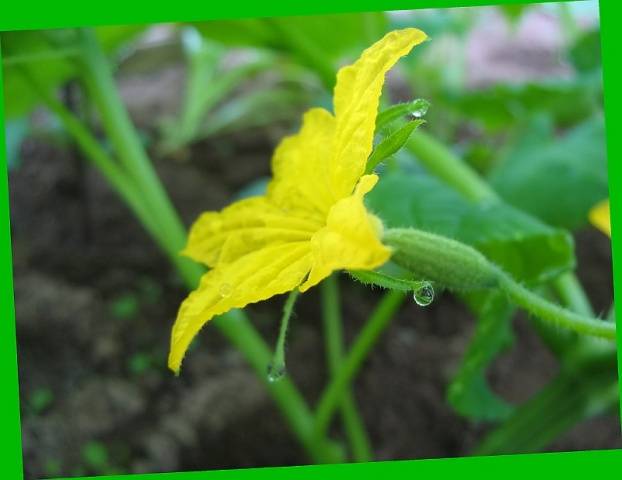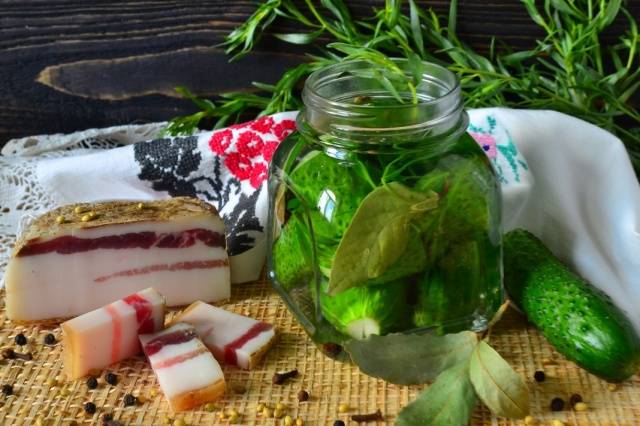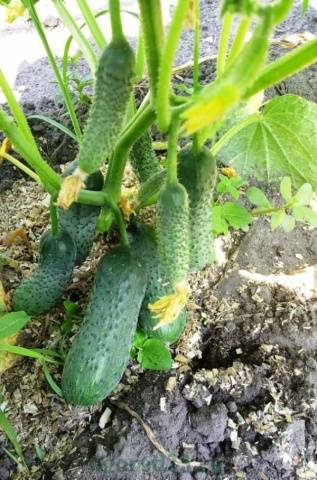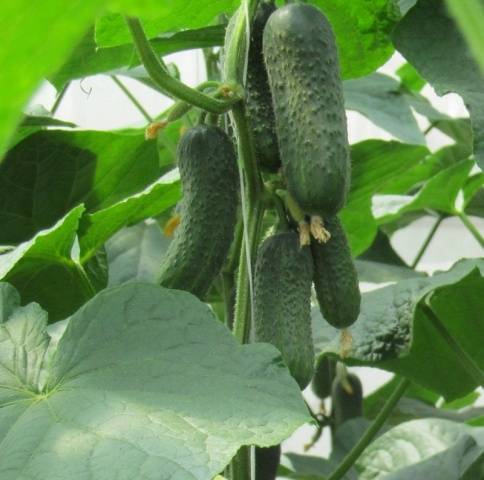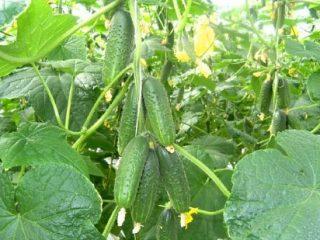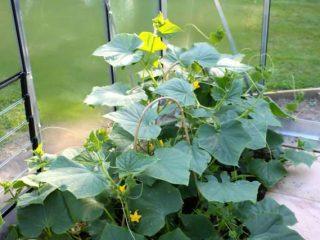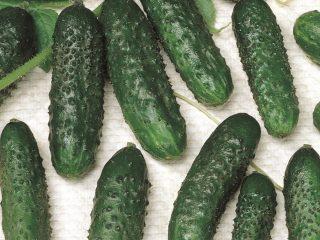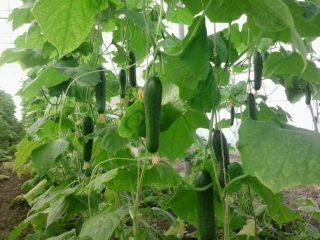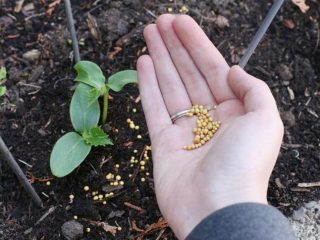Content
The sheer assortment of seeds can be confusing even for an experienced gardener. Today there are many varieties and hybrids of cucumber, all of them have strengths: some are more productive, others are disease-resistant, and others are distinguished by early ripening. How to choose a suitable variety and not "get lost" in the variety of seeds?
Foreign seeds are distinguished as a separate block, most often they are obtained as a result of selection, therefore, they compare favorably against the background of domestic sowing material. The most common are the Dutch varieties of cucumbers - they are more popular with summer residents and gardeners, due to their excellent characteristics and high taste.
What are Dutch cucumbers
Most often, people call all hybrids of this culture Dutch cucumbers. But this is wrong: there are dutch seeds not only hybrids, but also cucumber varieties. Hybrids are obtained as a result of selection, combining the positive qualities of several varieties. The hybrid differs from the variety also in that it does not produce offspring. That is, excellent fruits will grow from the purchased seeds, but it will be impossible to collect seed material from them for the next seasons.
There are also such hybrids of cucumber, inside which there are seeds, they can be planted and even get something in the end. But cucumbers grown in this way will no longer fully meet the characteristics declared by the seed manufacturer: the plant can get sick, the fruits will not be smooth and beautiful, the cucumbers can even become bitter.
The cost of Dutch seeds is much higher than domestic seeds. But such a high cost is fully paid off by the yield of the cucumber - most often Dutch crops bloom in bunches, each of which grows 3-10 cucumbers. On average, it is believed that a ton of cucumbers of Dutch origin can be harvested from one hundred square meters of land.
The strengths of the "Dutch"
Both varieties and hybrids of cucumbers grown from Dutch seeds are of high quality fruit. In general, the advantages of Dutch cucumbers look like this:
- high productivity is inherent in all varieties and hybrids of Dutch origin;
- resistance to most diseases;
- the presence of both bee-pollinated and non-pollinated species;
- suitability for planting in the ground and in greenhouses;
- lack of bitterness in fruits and high taste;
- cucumbers grow about the same size, smooth and beautiful;
- versatility of cucumbers - almost all varieties are suitable for salads and for preservation.
We can say that the Dutch varieties and hybrids of cucumber combine all the best qualities of this vegetable.
How to choose the right Dutch variety
The choice of a cucumber variety is a responsible event, this is exactly the case when the owner can be harmed by the advice of neighbors and reviews of sellers. Because when choosing a cucumber, it is important to take into account individual characteristics, such as:
- depth of groundwater;
- type of soil;
- planting seeds in a greenhouse or in open ground;
- the presence of bees on the site;
- weather conditions (temperature, summer duration, rainfall, frost);
- estimated watering frequency;
- the frequency of harvesting (every day, only on weekends);
- the purpose of cucumbers (for fresh consumption, for pickling, for sale).
If everything is clear with most of the factors, then some need to be deciphered.
What do the bees have to do with it
The fact is that the Dutch varieties, like other cucumbers, are divided into three types:
- Bee-pollinated.
- Self-pollinated.
- Parthenocarpic.
For the first type, bees are definitely needed, if they are not on the site, or the cucumbers are planted in a closed greenhouse, you can not wait for the harvest. Non-pollinated female flowers will become barren flowers.
Self-pollinated hybrids are more common than other species (almost all "Dutch" belong to this species). They are universal: they are suitable for greenhouses and for open ground. Self-pollinated varieties have inflorescences that combine female pistils and male stamens, these are the so-called hermaphrodites. They do not need additional pollination, they cope with this process on their own. Self-pollinated hybrids often do not produce seeds, but such cucumbers are also found with seeds.
Parthenocarpic species do not need pollination at all, all their flowers are female. Cucumbers can also be planted in a greenhouse and in open ground.
Salt or cut into salad
According to the taste characteristics, three types of cucumbers are distinguished:
- Salad.
- Salting.
- Universal.
They are all good, but each in its own way. The salad cucumber has a thin, delicate skin and juicy, tasty pulp. It is good to eat raw, add to salads and other dishes. But for preservation, salad cucumbers are not suitable - they "sour" in brine, become soft and shapeless.
For salting and the marinade is used pickling varieties of cucumbers... Their peel is thicker, after soaking with brine, such cucumbers become crispy and appetizing.
A versatile variety suitable for any purpose. This is a great option for private cultivation, when the owner will use the same cucumbers for both preservation and fresh consumption.
The best Dutch cucumbers
Only after analyzing all the factors, you can choose the right variety of cucumbers. If groundwater passes close to the site, you need to choose seeds that are planted shallow (1-2 cm). For summer cottages, where the owner visits only on weekends, hybrids with slow growth are suitable.
Angelina F1
One of the best representatives of the "Dutch" hybrid "Angelina F1". It is a very early cucumber and belongs to the category of "self-pollinated species". Cucumbers are medium in size, fruit length reaches 14 cm. These are versatile cucumbers that show themselves well in salting and delicious and crispy in salads. The hybrid is not afraid of shaded areas, it is resistant to most diseases characteristic of cucumbers. You can see the fruits of the cucumber "Angelina F1" in the photo below.
"Hector F1"
Another very early variety is the Dutch hybrid "Hector F1". The fruits of this variety are compact in size and have a thin skin with large pimples. Bushes "Hector" are small and not sprawling, but cucumbers grow on them in clusters.
An amazing feature of the fruits is their stable bright green color - cucumbers do not turn yellow from overripe, they can be stored for a long time after being picked. "Hector F1" is equally good for greenhouses and open ground, self-pollinated variety. The seeds are hardened from low temperatures and various diseases. You can see the hybrid in the photo.
"Bettina F1"
Bettina F1 is best grown in greenhouses. These cucumbers are great for growers who sell vegetables. They retain their presentation for a long time, do not turn yellow and do not deteriorate during transportation. Fruits ripen very quickly, plants bear fruit for a long time. Therefore, the yield of the variety is at a height.
The cucumbers themselves are medium (12 cm), cylindrical, regular in shape. The peel on them is dense, with tubercles. Cucumbers "Bettina F1" can be salted, fermented and eaten raw. A distinctive feature of the hybrid is that all fruits are located on the main stem. The plant does not really like the sun, this variety is great for greenhouses and shaded areas of the garden. You can see the Dutch hybrid in the photo below.
Dolomite F1
Dolomit F1 is also a very early variety. These cucumbers can be planted both in the greenhouse and in the ground - they are self-pollinated. A peculiarity of the hybrid is its ability to regenerate - after low temperatures or drought, the plant quickly recovers, resuming fruiting.
If Dolomite F1 is properly cared for, it will be possible to harvest the whole season. The fruits are dark green in color, the peel is dense with tubercles and thorns. This variety is perfect for preservation - the cucumbers are very crispy. Like all Dutchmen, Dolomit F1 is not afraid of diseases and temperature jumps. A sample of the fetus is shown in the photo.
Final word
Dutch cucumber varieties fully deserve the recognition and love of gardeners. They are the result of selection and therefore combine the strengths of the best varieties. Growing Dutch is even easier due to their versatility and resistance to stress and disease. All of them are very productive, but in order to collect a lot of high-quality fruits, you need to carefully consider the choice of the variety.



